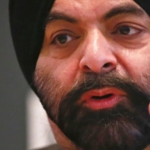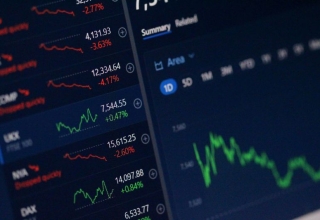Last updated on March 13th, 2023 at 02:06 pm
Silicon Valley Bank (SVB) was shut down by United States regulators on Friday (March 10) in a dramatic move that sent global banking shares tumbling as markets panicked over possible contagion from America’s largest banking collapse since the 2008 financial crisis.
The US government seized the assets of SVB, a major lender to US software startups since the 1980s, after a run on deposits rendered it untenable for the medium-sized bank to continue operating on its own.
Barely known to the general public, SVB specialized in startup finance and had become the sixteenth largest bank in the United States by assets. It has $209 billion in assets and around US$175.4 billion in deposits at the end of 2022.
It is not only the largest bank failure since Washington Mutual in 2008, but also the second-largest retail bank failure ever in the United States.
Treasury Secretary Janet Yellen held an emergency meeting of top US financial regulators in response to the unexpected collapse.
A Treasury statement said, “Secretary Yellen expressed full confidence in financial regulators to respond appropriately and underlined that the banking system remains robust and regulators have effective tools to address this type of situation.”
Situated in the shadow of the world’s largest technology businesses, SVB’s travails have sparked fears that other banks would fail as a result of the impact of high inflation and increased interest rates on weaker institutions.
As news of the government seizure spread, jittery clients gathered in small groups in front of the SVB offices in Santa Clara, California on a wet day and inquired how they might withdraw their money.
Under the condition of anonymity, a customer wearing a T-shirt and sweatpants stated that he used the bank for payroll at his startup.
“It is not an ideal circumstance. Some extremely top-tier (venture capital companies) have substantial exposure here,” He added that he was concerned about his employees.
Friday, the bank’s doors were locked to customers. A UK-based client of the bank informed Reuters that a client dashboard was unavailable.
Dean Nelson, the chief executive officer of Cato Digital, waited in a line outside the SVB Santa Clara headquarters for answers. Nelson expressed concern regarding the company’s capacity to pay its employees and cover its bills.
“Cash flow is the greatest obstacle for the majority of businesses here. The king of a startup is cash. To have runway, it is essential to have sufficient cash flow and work flow.”
According to the Federal Deposit Insurance Corporation (FDIC), the main office and all branches of Silicon Valley Bank will reopen on March 13, and all insured depositors will have full access to their protected deposits no later than Monday morning.
According to the FDIC, 89 percent of the bank’s $175 billion in deposits were uninsured as of the end of 2022, and their destiny is unknown.
How the Silicon Valley Bank Collapsed Happened
Businesses such as video game developer Roblox Corp and streaming device manufacturer Roku Inc reported hundreds of millions in bank deposits. Roku disclosed that its deposits with SVB were mostly uninsured, resulting in a 10% decline in its share price during prolonged trading.
Others in the technology industry whose paychecks were dependent on the bank were likewise concerned about receiving their money on Friday. An SVB branch in San Francisco had a sign on the door instructing customers to call a toll-free number.
The FDIC stated that it will seek to sell SVB’s assets and that dividend payments to uninsured depositors may be made in the future.
In the past, the FDIC has acted swiftly, often concluding transactions over the weekend to sell significant banks.
The rapid escalation of issues at SVB following the bank’s announcement on Wednesday that it would raise capital demonstrates how a push by the U.S. Federal Reserve and other central banks to combat inflation by ending the age of easy money is exposing market weaknesses.
The concerns pummeled the banking industry.
According to a calculation by Reuters, US banks have lost more than $100 billion in market value over the past two days, while European banks have lost an additional $50 billion.
The shares of Bank of America, Wells Fargo, and Citibank fluctuated on Wall Street on Friday, as Yellen told a congressional hearing that she was “watching” a few banks.
This was immediately followed by the announcement that the California Department of Financial Protection and Innovation (DFPI) had shuttered SVB and assigned the Federal Deposit Insurance Corporation (FDIC) of Washington to assume control.
The crisis action protects customers with deposits of up to US$250,000 and, more importantly, gives time to locate a prospective buyer for the troubled Silicon Valley lender.
Keep Reading
After failing to weather the crisis on its own, CNBC reported on Friday that SVB was in talks with prospective purchasers.
Briefing.com’s Patrick O’Hare wrote in a recent note, “Today’s argument centers on whether SVB’s problems are only SVB’s problems or the beginning of a larger crisis for the banking industry.”
The stock market appears to enable for it to be more of a company-specific issue or, at the very least, not a crippling systemic issue.
Investors fear that other banks may incur similar losses as they seek to raise capital in an environment of rising interest rates and aggressive central bank action to combat decades-long inflation.
“We’ll have to observe how this tale unfolds because something always breaks hard during or after a Fed hiking cycle,” Deutsche Bank analysts said in a note.
“Is this another little hiccup on this front, or the beginning of something more significant? Tough to know, but I would be astonished if there weren’t many more casualties of this boom-and-bust cycle.”
As a result of the episode’s propagation of apprehension regarding the banking industry’s hidden dangers and its susceptibility to a rise in the cost of money, a number of analysts foresee further losses for the sector.
Christopher Whalen, chairman of Whalen Global Advisors, stated, “There could be a bloodbath next week as banks are in trouble, short sellers are out there, and they will attack every single bank, especially the smaller ones.”
Also Read:- Pilot salary in the Philippines in 2023



























